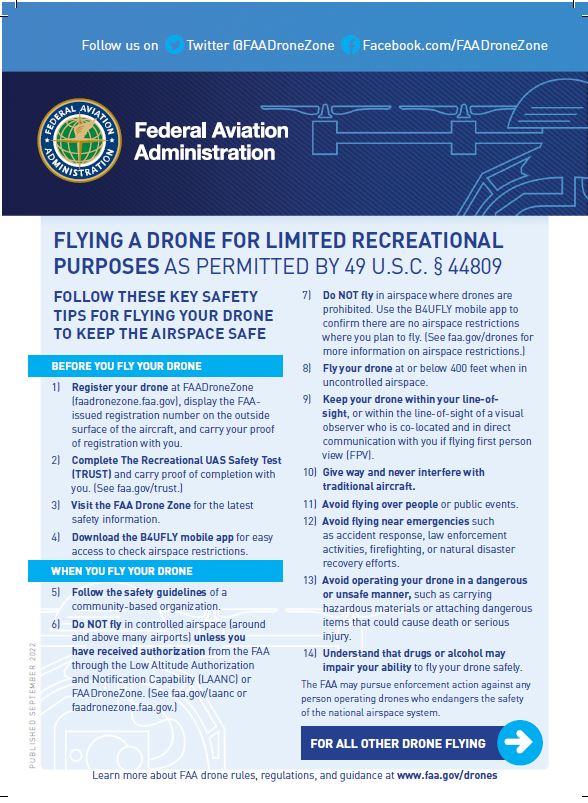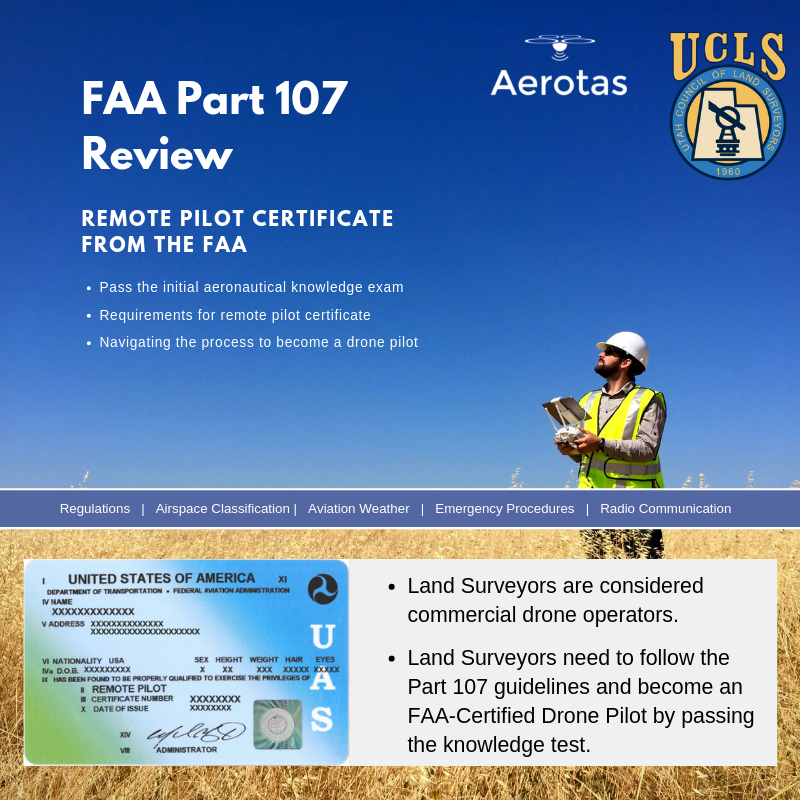FAA Part 107 is a comprehensive set of rules and requirements that govern the operation of drones for commercial purposes within the United States. This certification is mandatory for drone pilots who wish to offer professional drone services and legally make money with their drones. Obtaining a Part 107 drone license allows pilots to engage in a variety of commercial activities, such as selling aerial photos and videos, conducting inspections, collecting data, and surveying or mapping areas. Failure to comply with these rules or operating drones commercially without the necessary license can result in fines issued by the FAA. Fortunately, pilots can prepare for the Part 107 test through study guides and test prep courses available, ensuring they meet all the requirements. Additionally, there have been recent updates to the Part 107 rules, including the introduction of LAANC for airspace authorizations, changes to the recertification process, requirements for drone marking, and the designation of restricted sites. To ensure compliance, increased surveillance and ramp checks are being conducted, making it essential for drone operators to stay informed and follow the regulations outlined in Part 107.
FAA Part 107 – Rules and Requirements for Commercial Drone Operations
Overview of FAA Part 107
FAA Part 107 is a set of rules and requirements established by the Federal Aviation Administration (FAA) for operating drones commercially in the United States. These rules provide guidelines and regulations that drone pilots must adhere to in order to ensure safety in the national airspace. The main objective of Part 107 is to enable the safe integration of drones into the airspace system and to minimize the risks associated with their operations.
Importance of FAA Part 107 Certification
Having FAA Part 107 certification is crucial for any drone pilot looking to offer professional drone services. The certification demonstrates that a drone pilot has successfully met the knowledge and skill requirements set by the FAA. It not only opens up opportunities for pilots to legally monetize their drone operations but also instills confidence in clients and provides assurance that the pilot operates within the parameters of the law.

Scope of Activities Allowed with Part 107 License
With a Part 107 license, drone pilots gain the legal authority to engage in a wide range of commercial drone activities. These activities include the sale of aerial photographs and videos, conducting inspections of buildings and infrastructure, collecting data for various applications such as agriculture and environmental monitoring, as well as surveying and mapping areas for construction and land development projects. The license allows for flexible and diverse commercial drone operations, giving pilots the freedom to explore new opportunities and industries.
Consequences of Operating Commercial Drones Without Part 107 License
Operating commercial drones without a Part 107 license can have serious consequences. The FAA is authorized to impose fines and penalties on individuals who conduct commercial drone operations without the appropriate certification. These fines can range from a few hundred dollars to thousands of dollars, depending on the severity of the violation. Additionally, operating without a proper license undermines the credibility and professionalism of the pilot, potentially leading to reputational damage and a loss of business opportunities.
Taking the Part 107 Test
In order to obtain a Part 107 license, drone pilots must successfully pass the Part 107 test administered by the FAA. The test consists of multiple-choice questions that assess the pilot’s knowledge and understanding of various topics, including airspace regulations, weather conditions, drone operations, and emergency procedures. The test is typically taken at an FAA-approved testing center and requires a passing score of 70% or higher. Pilots can prepare for the test by studying the official FAA study guide and other resources available to them.
Resources for Studying and Test Preparation
To help drone pilots prepare for the Part 107 test, the FAA provides a comprehensive study guide that covers all the topics included in the exam. This study guide serves as a valuable resource and is highly recommended for anyone planning to take the test. In addition to the study guide, there are also various online courses, practice exams, and study materials available from private organizations and educational institutions that can assist pilots in their test preparation. It is important for pilots to dedicate sufficient time and effort to studying in order to increase their chances of success.

Updates and Changes to Part 107 Rules
Since its implementation in 2016, Part 107 has undergone several updates and changes to enhance safety and accommodate advancements in technology. The FAA continuously reviews and revises the rules to keep up with the evolving drone industry and address any emerging concerns. Some notable changes include the introduction of the Low Altitude Authorization and Notification Capability (LAANC) system for airspace authorizations, which has streamlined the process for obtaining permission to fly in controlled airspace. Additionally, there have been updates to the recertification process, drone marking requirements, and regulations for restricted sites and no-fly zones.
Introduction of LAANC for Airspace Authorizations
The introduction of the Low Altitude Authorization and Notification Capability (LAANC) system has revolutionized the process of obtaining airspace authorizations for commercial drone operations. LAANC provides drone pilots with a digital platform where they can request and receive near real-time approvals to fly in controlled airspace. This system has significantly reduced the time and effort required to obtain airspace permissions, making it more convenient for pilots to plan their operations and comply with airspace regulations.

Recertification Process for Part 107 License
To ensure continued proficiency and compliance with the rules, Part 107 license holders are required to undergo a recertification process. This process involves taking a recurrent knowledge test every two years. The recurrent test serves as a refresher on important topics related to airspace regulations, safety procedures, and operational considerations. It is essential for drone pilots to stay up to date with the latest regulations and maintain their knowledge and skills through regular recertification.
Drone Marking Requirements
Part 107 also includes guidelines for drone marking, which requires that all commercial drones be marked with a unique registration number. This number, also known as an N-number, must be visible on the exterior of the drone and should be easily readable. The purpose of drone marking is to facilitate identification and traceability in case of incidents or violations. Pilots must ensure that their drones are appropriately marked to comply with the regulations.
Restricted Sites and No-Fly Zones
Part 107 rules also establish restrictions on flying drones in certain areas deemed as restricted sites or no-fly zones. These areas may include sensitive government facilities, military installations, and airports. It is the responsibility of drone pilots to familiarize themselves with these restricted sites and adhere to the no-fly rules to avoid potential risks and legal consequences. Pilots can consult various resources, such as FAA’s B4UFLY mobile application, to access information about restricted areas and plan their flights accordingly.
Increased Surveillance and Ramp Checks for Part 107 Compliance
To ensure compliance with Part 107 rules and maintain safety in the national airspace, the FAA has increased surveillance and implemented ramp checks. Ramp checks involve on-site inspections of drone operations, where FAA inspectors verify that pilots possess the necessary certifications, comply with regulations, and conduct their operations safely. The increased surveillance and ramp checks serve as a deterrent for non-compliance and help ensure that all commercial drone operations are conducted in accordance with Part 107 rules.
In conclusion, FAA Part 107 certification plays a vital role in enabling safe and legal commercial drone operations in the United States. It opens up opportunities for drone pilots to capitalize on their skills and provides assurance to clients that their operations adhere to the highest safety standards. With thorough preparation, study resources, and adherence to Part 107 rules, drone pilots can confidently navigate the certification process and embark on successful commercial drone ventures.



